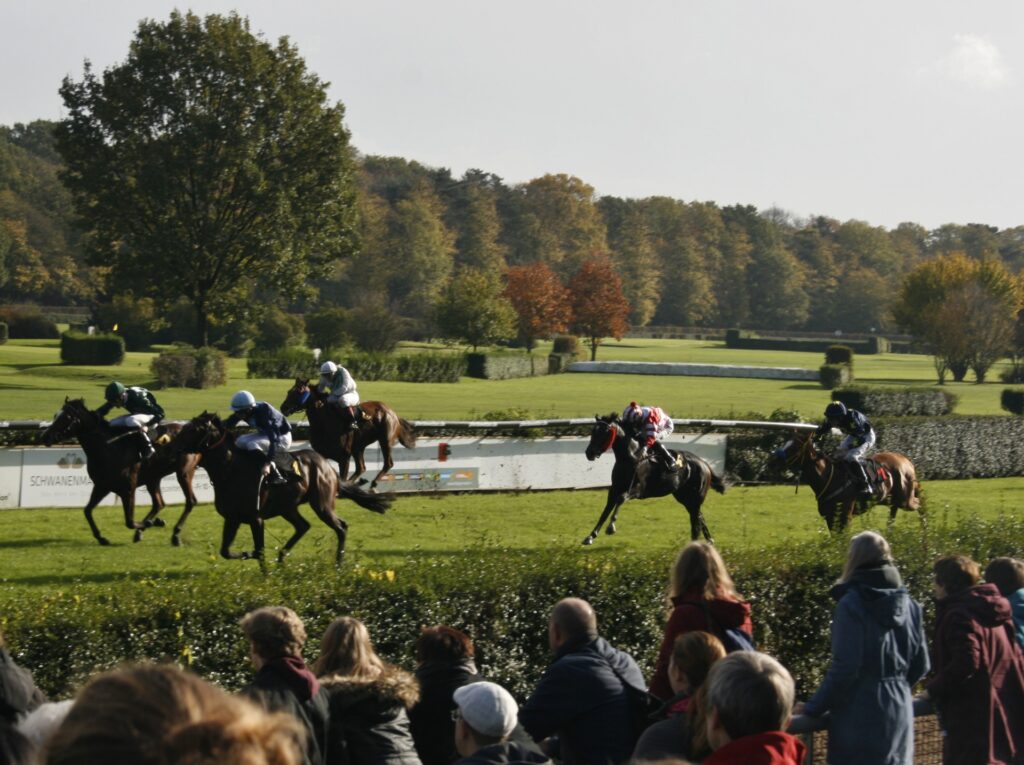In the modern world, we have witnessed major paradigm shifts that did not exist two or three decades ago. One of them is to conceive of domestic and wild animal life as a priority of sentient beings. This is very important and leads to the diatribe: Is horse racing for business and entertainment cruel? It’s a question that prompts reflection, doesn’t it? We’ll answer: no, they are not cruel at all and if you still have doubts, we invite you to explore the fundamentals in this post:
Prioritising horse welfare
In horses, both those dedicated to equestrianism and those working on farms, the health and welfare of the horses is a priority and an obligation for owners and trainers. They are not only sentient beings, but an asset to be protected. Moreover, laws, science and commitment to the planet and society back this up. Let’s see:
Legislation to safeguard horses
Legislation in the United Kingdom is clear about the obligations of owners or carers to look after horses. This is the Animal Welfare Act. This legal framework does not only focus on equines: it covers all animal life within UK borders.
The relevant points are:
- Providing the animal with a suitable place to live.
- Ensuring appropriate healthcare in general. This includes good nutrition according to the activity, protection from disease, keeping a detailed record of veterinary treatments, including vaccinations and the corresponding registration at a specialised clinic.
However, this law is not the only one. Let’s take a look at the laws concerning the care of event horses:
| Anti-doping | The issue of doping and drugs is regulated by the British Horseracing Authority and it involves certain rules and sanctions. |
| BHA General Instructions (BHAGIs) | The British Horseracing Authority also has very detailed instructions, including race planning, services, stewards‘ appointments, racecourse stabling, canteen and accommodation, boxes and stewards’ room and access cards and badges, among many other topics. |
| Bloodstock Industry | The BHA provides a code of practice and enforcement guidelines specifically for the bloodstock sector, which deals with the breeding, buying, and selling of racehorses. |
| Commercial arrangements | This includes guidance for operators, trainers and riders. |
| Health and safety | BHA has published guides such as the “Red Book” that cover health and safety standards for thoroughbred racing and breeding. These include sample risk assessments and protocols for safe operation within the industry. |
| Ownership | Ownership regulations provide guidance for shared ownership, syndicate management, and club operation, covering elements like naming policies, prize distribution, and syndicate licensing. |
| Rates of exchange | The BHA specifies exchange rates for international trading currencies relative to the British pound, relevant to cross-border transactions within the industry. |
| Rules of racing | This is a comprehensive rulebook for all events, encompassing the specific rules for various types of races, maintaining uniform standards across events. |
| Scale of weight for age allowances | These rules determine weight allowances for horses based on factors such as age, breeding, and training origin, ensuring competitive balance in races. |
| Sponsorship | These laws have everything concerning the sponsorship of horses, jockeys, bookmakers and owners. |
Caring hands: the professionals behind horse welfare
In the UK, there are many organisations of veterinary professionals and scientists who have taken it upon themselves to ensure compliance with the above-mentioned rules. There are many institutions that have done their bit, either in their own field or collectively.
They have done so not only for a paradigm shift in society’s view of equestrian events in the UK, but also to ensure that it is not just a question of image, but that they are protagonists in their field of action in the welfare of horses.
Commitment to veterinary research
These helping hands for equine health and welfare have faces, names, and are not just a blur. A major contribution was made by the University of Bristol’s School of Veterinary Science in conjunction with the globally operating NGO World Horse Welfare.
This survey covered a wide range of issues from horse health and safety in the UK to grants for research and education in veterinary science. It involved 31 keepers and 20 experts who attested to the high standard of equine welfare.
Here are some of those names:
- Sue Horseman, PhD student.
- Dr Becky Whay, Professor of Animal Welfare and Behaviour.
- Toby Knowles, Professor of Food and Agricultural Sciences.
- Alistair Barr, Professor of Veterinary Surgery.
- Dr. Siobhan Mullan, Research Fellow in Animal Welfare Science, Ethics and Law.
- Henry Buller, Professor of Geography, University of Exeter.
Another important contribution was made by the UK Horse Welfare Board, which is made up of the BHA, racecourse management and staff, and horsemen. It is worth mentioning that the chairman of this institution is Barry Johnson, who is a former President of the Royal College of Veterinary Surgeons. This research is still ongoing and aims to reduce the risk of injury to jumping horses. They are supported by the team of scientists linked to the epidemiological field of the Royal Veterinary College.
| Overall, these studies, at least those that have already reached conclusions, determined that racehorses, at a glance, never look malnourished, stressed, frightened or unwilling to compete. |
Research findings indicated that:
- All activities are done under careful supervision involving private, state and university organisations. Horses at equestrian events are often treated by their owners, riders and trainers as real professional athletes.
- The horses receive excellent nutrition, special care and expertly supervised training. In fact, just like humans, they have access to a warm, comfortable roof over their heads, first-class medical care, and from birth to death, which always occurs from old age and natural causes.
- The fact that horses are used for racing or jumping is simply self-evident: they are naturally good at these tasks. It could even be said that many other sports should learn from equestrian events and invest in the care they provide for their athletes and the community at large.
Ensuring lifelong welfare after racing
Contrary to popular belief, a racehorse is not slaughtered or killed if for any reason it can no longer compete.
A horse that retires from the track at the end of its career usually has a peaceful old age. It is used as a riding horse or as a breeding horse. In addition, depending on the case, they are used for other equestrian disciplines such as riding or simply spending their retirement years in a paddock or stable under the care of their owners and veterinarians.
| In essence, modern horse racing emphasises strict animal welfare, ensuring that racehorses receive professional care, quality nutrition, and safe, respectful retirement—values that Racing Club also upholds for its own athletes. |
Ready to become a Horse Owner?
You’re just a few clicks away from starting this exciting adventure with RC Syndicates!
Buy a Share





